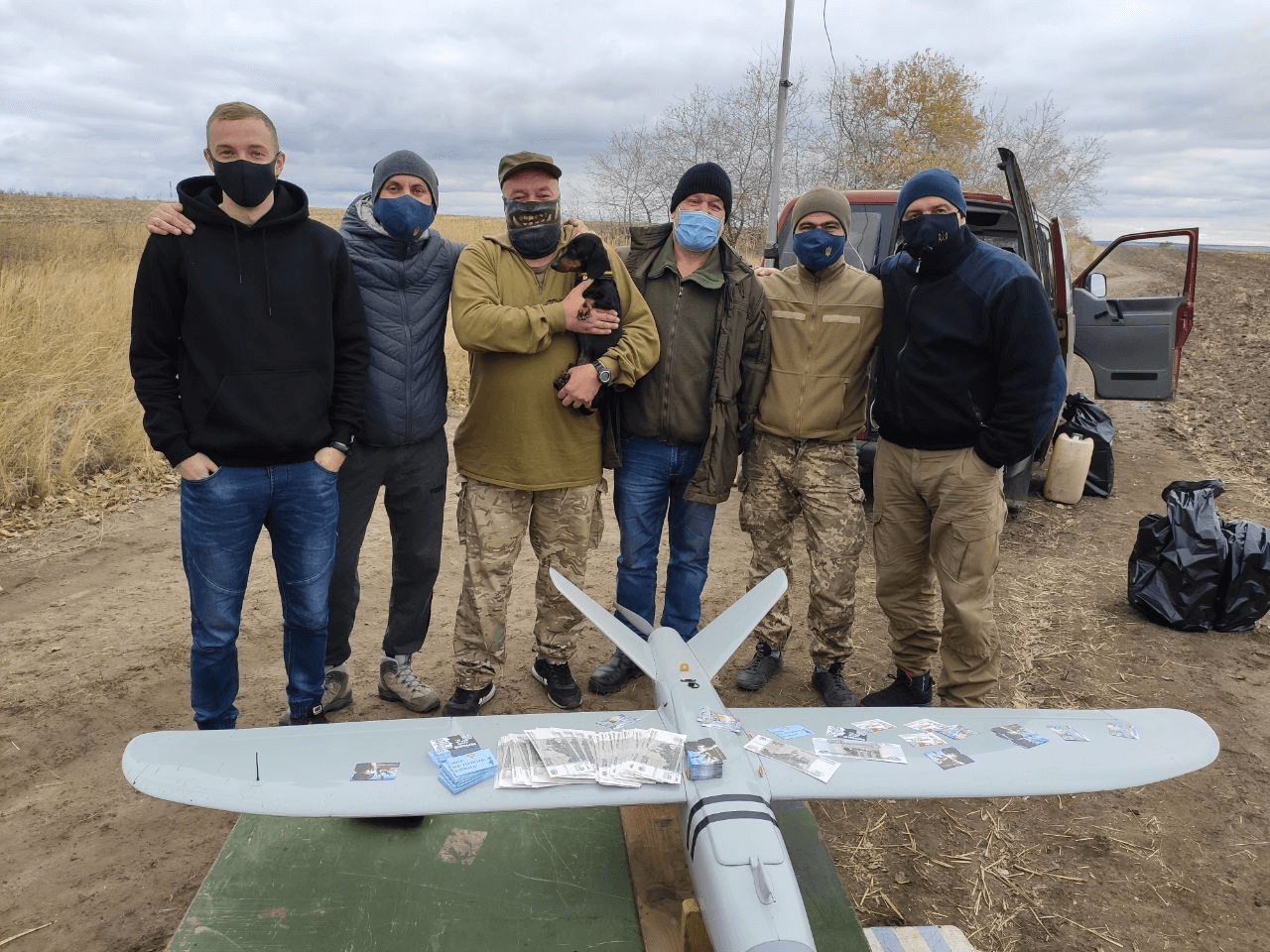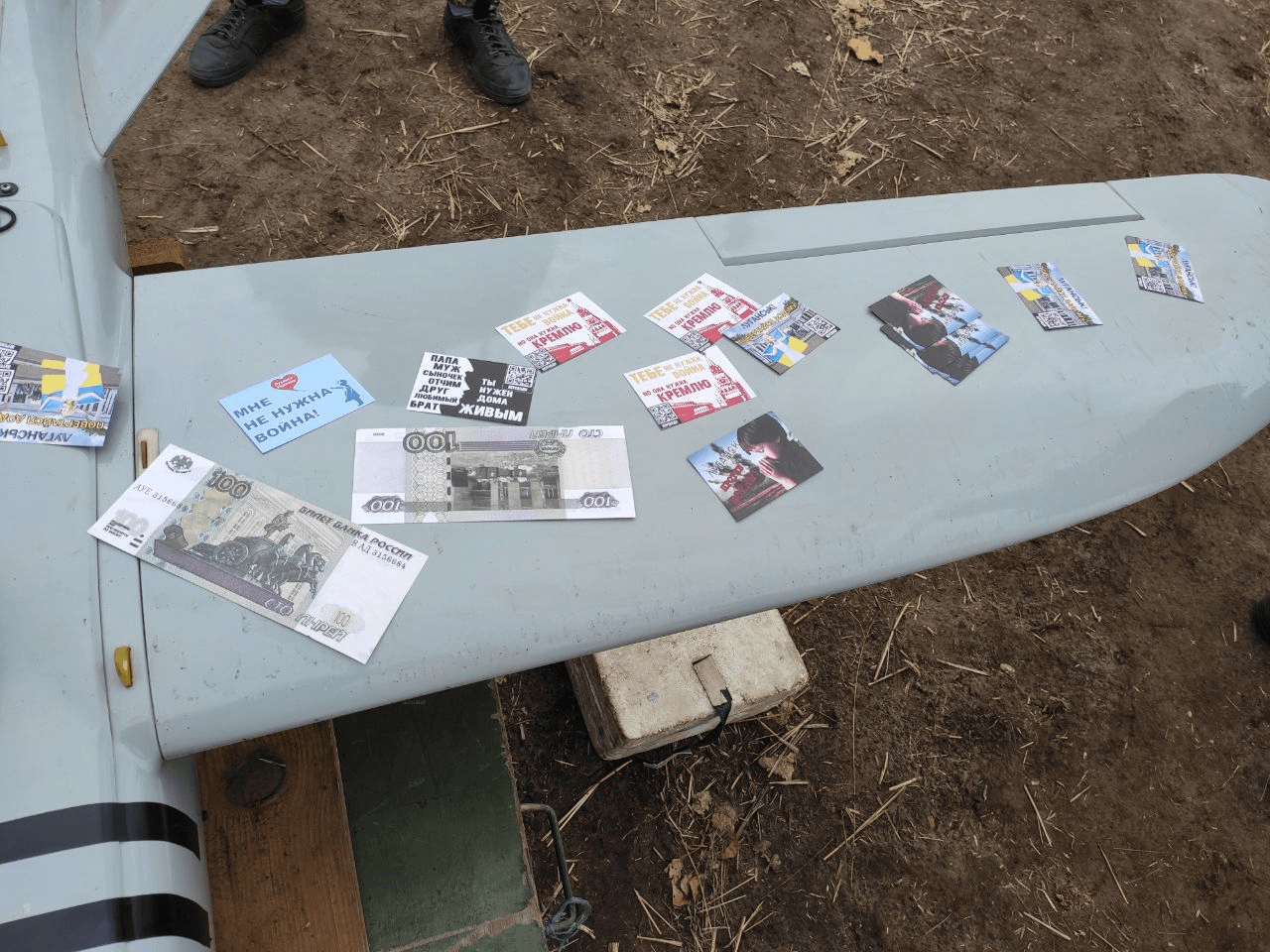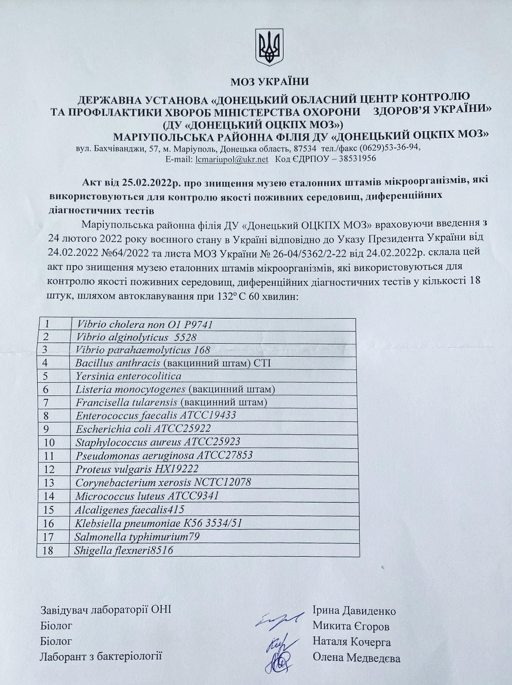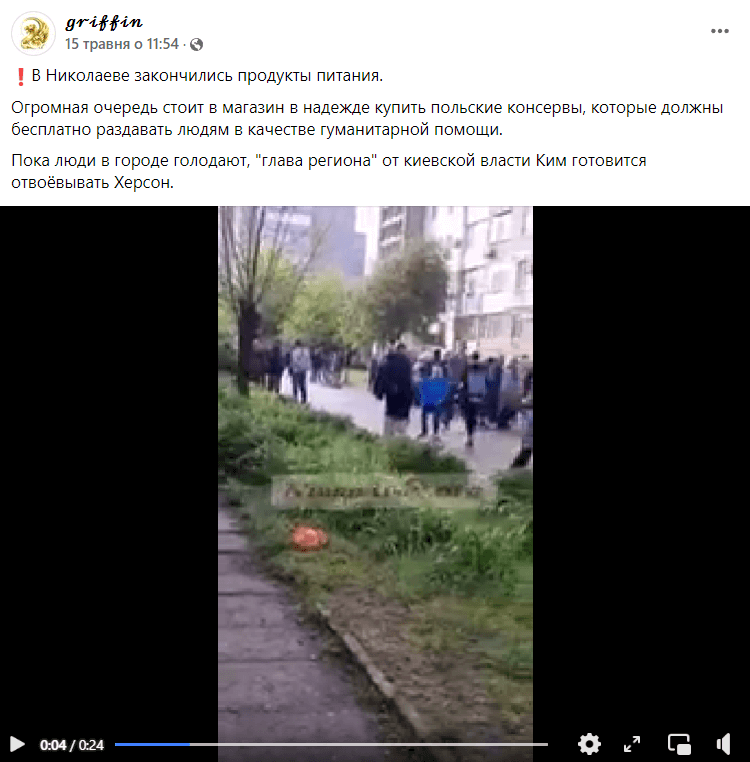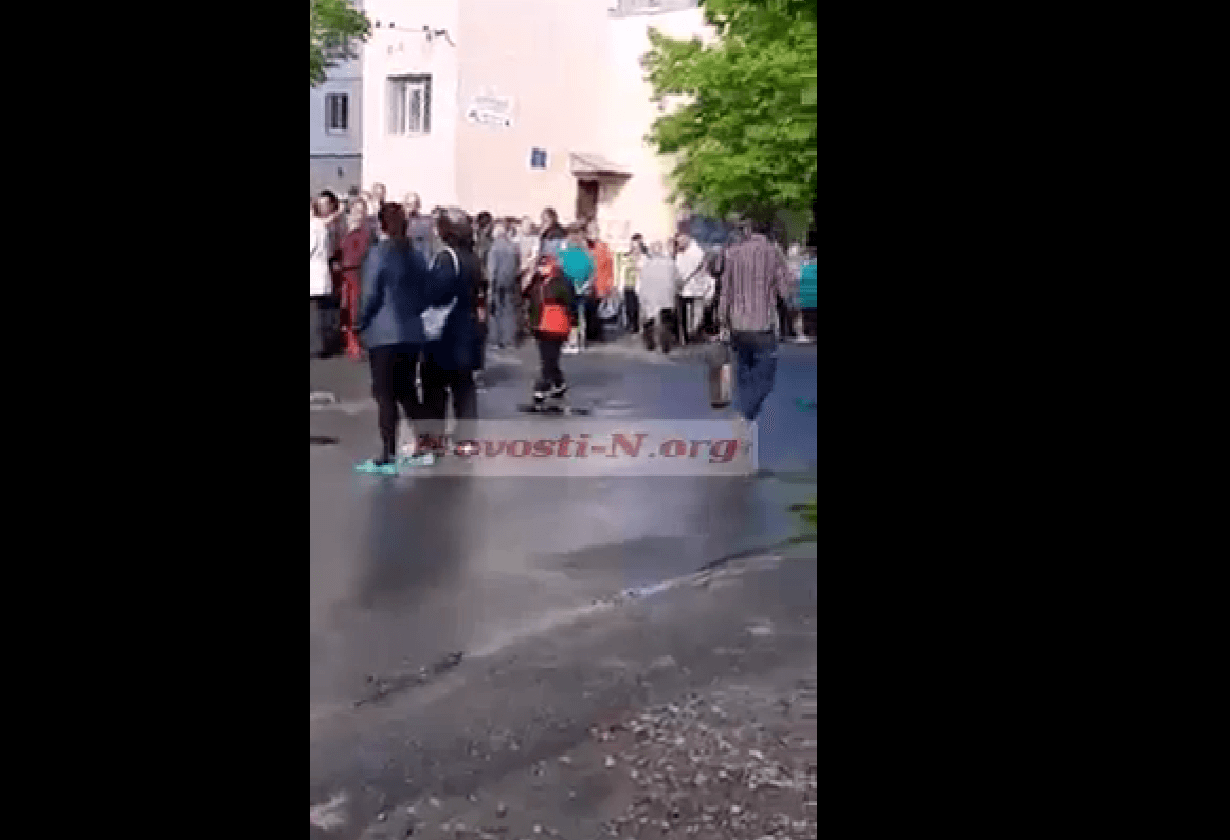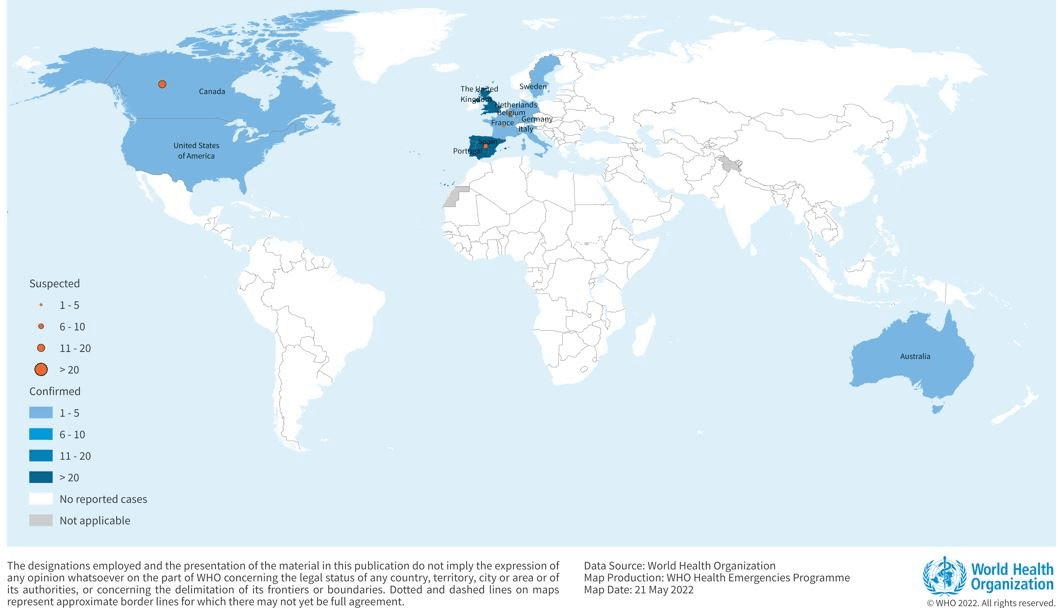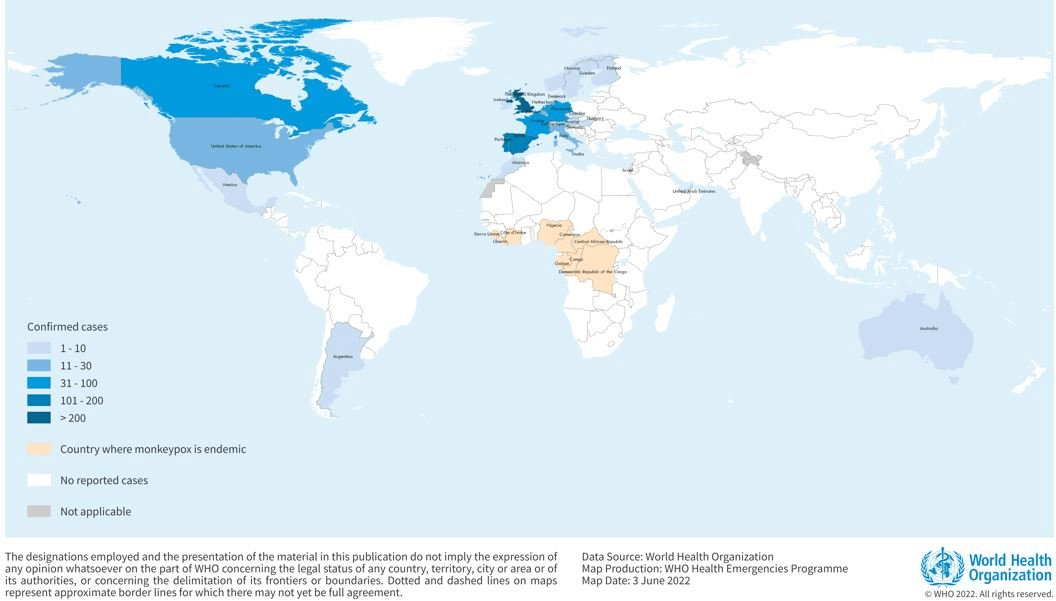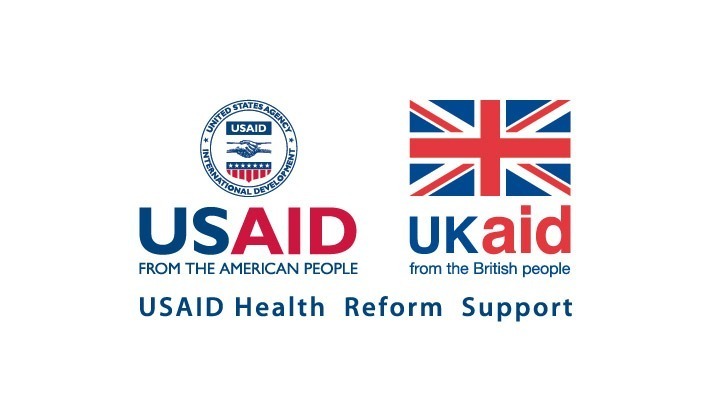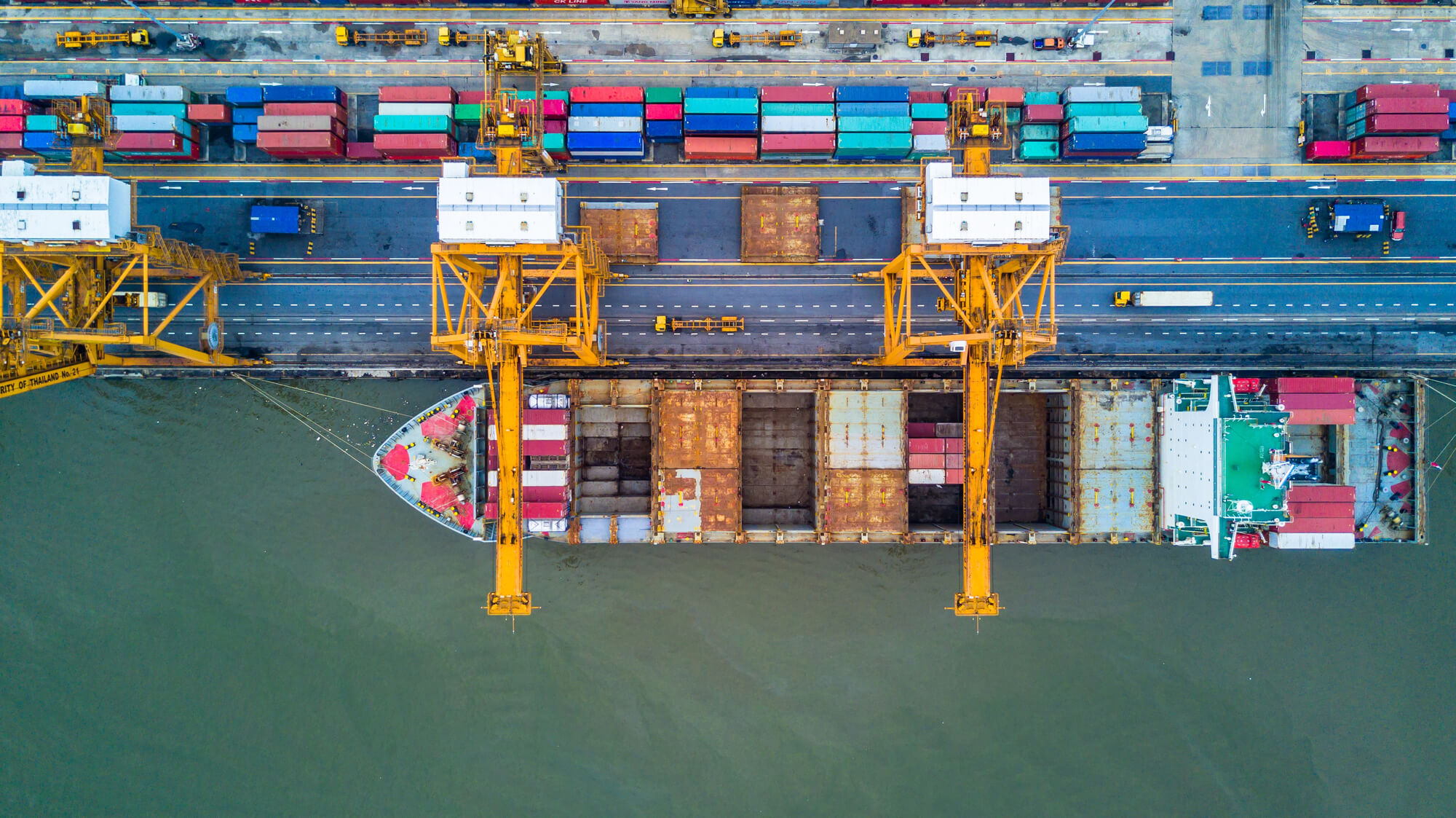Between May 12 and 26, 2022, disinformation pieces mainly had to do with russian narratives about “US biolabs in Ukraine” and provocations involving weapons of mass destruction. Pro-russian media also disseminated manipulative statements about humanitarian aid, distorting information about distributing aid in Ukrainian-controlled areas and repeating the propaganda about russian “aid” in the occupied territories. Against the backdrop of the spread of monkeypox in Europe, more narratives began to appear downplaying or completely denying the disease’s threat.
With the support of the USAID Health Reform Support project, VoxCheck analyzes and refutes public health narratives spread in the information space of Ukraine, Belarus, and russia on a weekly basis.
Disinformation: Military-biological laboratories and medical experiments conducted on Ukrainian citizens
The information was widely disseminated (approximately 200 articles) by russian media outlets about Pfizer’s and Moderna’s involvement in US military-biological research in Ukraine, claiming these companies reduce the cost of testing drugs in this way.
russia’s defense ministry is trying to prove the existence of “US military-biological experiments” in Ukraine by the fact that the United States signed an agreement with Ukraine in 2005 to implement military-biological programs in the country. Later, the US Strategy for Countering Biological Threats was purportedly adopted to legalize “dual-use research.”
Media outlets in russia also spread information about US experiments conducted on people in Ukraine, including the Pentagon’s alleged biological experiments on patients at a psychiatric ward near Kharkiv. This was stated by russia’s chief of radiation, chemical, and biological protection, Igor Kirillov.
What’s the reality?
First, none of the agreements listed by russia’s defense ministry stipulate that the United States conducts “military-biological experiments” in Ukraine.
In 2005, Ukraine’s MoH concluded an agreement with the US Department of Defense to prevent the spread of technologies, pathogens, and knowledge that could be used to develop biological weapons. The cornerstone of the agreement is counteracting the threat of dangerous infectious disease outbreaks. The US Department of Defense may help Ukraine’s Health Ministry conduct research, identify hazardous biological agents, control the use of harmful pathogens, etc. The agreement is publicly available and does not mention “military-biological programs” or the involvement of any facilities of Ukraine’s Defense Ministry.
Under the US Biological Threat Reduction Program mentioned by the propaganda outlets, laboratories were modernized to achieve a higher level of biosafety in Ukraine; research projects were conducted; epidemiological surveillance was carried out, etc. For instance, during the COVID-19 outbreak, Ukraine’s Defense Ministry deployed mobile laboratories under the program. It did so to detect COVID-19 cases, not to conduct military experiments. There is no evidence that the program was ever used for military purposes.
The program clearly states that the Ukrainian laboratories are owned and operated solely by the Ukrainian government. By the way, until 2014, the Biological Threat Reduction Program had extended to russian laboratories.
Second, Pfizer does not participate in the US “military-biological research” in Ukraine. The company conducts standard clinical trials of its drugs, i.e., doing the same in many other countries, including russia.
Ukraine and russia are countries important for studying new drugs because patients there have a dire need for medicines to treat cancer and neurological and gastrointestinal disorders. In addition, it is cheaper to do business here compared to the United States and Western Europe. Overall, russia and surrounding countries account for 10% of all clinical trials.
According to GlobalData, as of March 2022, 502 trials in Ukraine and 842 in russia were underway.
By the way, Moderna does not conduct clinical trials in Ukraine. It carries them out in russia.
Disinformation: Ukrainian military blew up chemical and industrial facilities, creating the threat of chemical attacks
According to most russian media reports, Ukrainian special services allegedly blew up a container with fertilizers inside near the village of Dovhenke in the Kharkiv region on May 11. Reportedly, they did it to accuse the russian military of using chemical weapons.
What’s the reality?
russian media outlets regularly spread fake news about Ukrainian security forces attempting to blow up warehouses with chemicals to poison the residents of the Donetsk and Luhansk regions. However, they never published anything to confirm at least one of their numerous statements.
Sometimes the russian media are so confused with their own far-fetched accusations that they give themselves away. russia’s defense ministry said Ukrainian security officers blew up a container with nitrate in Dovhenke in the Kharkiv region. However, on the same day, pro-Kremlin blogger German Kulikovsky posted footage on his Telegram channel showing the site of the explosion and a column of rising orange smoke. According to him, the Armed Forces brought a storage tank containing an unknown substance to their positions, after which a russian UAV destroyed it. Thus, the Armed Forces had allegedly wanted to set up a scene of the russian military using chemical munitions. The vapors were “unlike those of any toxic warfare agent.” However, there was no comment from the Ukrainian side regarding the explosion, which renders the insinuation theory meaningless.
Besides, before shelling chemical and industrial facilities in Ukraine, russia’s defense ministry usually claims that the Ukrainian military has planted mines in the facilities. Before firing at the Sumykhimprom plant in Sumy, russia’s defense ministry said the “Ukrainian nationalists” had planted mines in containers with ammonia and chlorine inside in Sumy, with plans to poison locals.
Disinformation: Ukrainian authorities deliberately infected people with tuberculosis in the occupied Luhansk region
russian media outlets and social network users spread information that in 2020, Ukraine tried to infect people with tuberculosis in the Slovyanoserbskyi district of the Luhansk region (a temporarily occupied part of the Luhansk region) by distributing counterfeit bills infected with the tuberculosis pathogen. russia’s defense ministry was the primary source for these information pieces.
What’s the reality?
The phony reports appeared in 2020 and continue to spread in 2022 as part of the main russian narrative of Ukrainian “provocations” involving biological weapons. In November 2020, LPR representatives claimed that 100-ruble bills had been dropped over the town of Slovyanoserbsk and that the locals who’d picked up those bills reportedly began to feel bad due to tuberculosis.
In 2020, Ukrainian volunteers did drop counterfeit bills and campaign leaflets (saying “You don’t need war, the Kremlin does,” “Luhansk! Come back home,” and the like) from a drone in the occupied Luhansk region. In December 2020, Radio Liberty took a comment from a volunteer with the call sign “Bullfinch,” who operated this UAV. He called the idea of distributing bills a mere tease, a joke. Also, on November 9, 2020, the Ukrainian military member and blogger Anatoliy Shtefan (call sign “Stirlitz”) posted a picture of the bills and leaflets. By November 2020, the Ukrainian military and volunteers had repeatedly dropped similar leaflets over the occupied territories of Donbas.
The UAV that dropped counterfeit bills and campaign leaflets. Source: Anatoliy Stirlitz
The deteriorating health of the inhabitants of the Luhansk region mentioned by the LPR propagandists could not occur because of dropping bills or leaflets. First, tuberculosis has an incubation period (i.e., the time elapsed between being infected and seeing the first symptoms) of at least 3-9 weeks. In addition, not everyone infected with tuberculosis has an open form with pronounced symptoms. Second, tuberculosis is transmitted by airborne droplets after prolonged exposure to someone with the illness indoors. However, the disease is not transmitted through contact with objects used by the patient.
Disinformation: Collecting cholera pathogens in Mariupol is proof that Ukraine was preparing provocations involving weapons of mass destruction.
russian and pro-russian outlets also spread information about two laboratories operating in Mariupol before the occupation involved in collecting and certifying cholera pathogens. The collected pathogens were then sent to the Public Health Center in Kyiv, which purportedly forwarded the materials to the United States. russia claimed that these facts prove that Ukraine was preparing provocations involving weapons of mass destruction. That is why on February 25, 2022, the Mariupol laboratory staff allegedly destroyed a collection of pathogens, including cholera, anthrax, and tularemia.
The document about the destruction of microorganisms cited by russia’s defense ministry.
What’s the reality?
russia mentioned two laboratories but named only one of them, namely the Mariupol branch of the state institution “Donetsk Regional Center for Disease Control and Prevention of the Ministry of Health of Ukraine.” Its employees stopped working there because of russia’s large-scale invasion in February 2022. This institution’s activities had nothing to do with creating weapons of mass destruction.
According to the laboratory’s activity plan, they had to monitor the circulation of infectious pathogens and analyze and predict the spread of these diseases. In particular, the laboratory had to carry out epidemic surveillance and diagnose cholera. Similar disease control and prevention centers operate across Ukraine, carrying out epidemiological surveillance to identify pathogens of dangerous diseases. For instance, the Center’s laboratories in the Donetsk region are analyzing the material of patients with acute intestinal infections and wastewater to prevent cholera.
Vibrio cholerae is detected in water bodies in Ukraine almost every year, so it is little wonder that the Ministry of Health laboratories closely monitor this infectious disease’s spread. The last confirmed outbreak of cholera in Ukraine occurred in 2011 in Mariupol.
Regarding the destruction of pathogens (microorganisms causing disease) in the laboratory on February 25, 2022, we could not find any letter or order from the Ministry of Health confirming those actions. However, on March 11, 2022, the WHO told Reuters it recommended that Ukraine destroy pathogens to prevent a leak of the dangerous pathogens due to the hostilities. It is known that russia has been indiscriminately shelling Ukrainian cities. Since the beginning of the large-scale invasion on February 24, russia has completely destroyed over 100 medical facilities in Ukraine.
There is no evidence that Ukraine sent pathogens to the United States. Also, this assumption is illogical because the United States has its own system for monitoring and preventing infectious diseases, including cholera. By the way, russian laboratories also engage in similar epidemic surveillance.
Disinformation: food supplies ran short in Mykolaiv, and humanitarian aid was distributed for money
Fake information was spread on social networks about distributing humanitarian aid in Mykolaiv. In their posts from May 15, users claimed that food supplies had run out in Mykolaiv, and locals stood in lines to buy Polish canned food, which was supposed to be distributed free of charge as humanitarian aid. A video was added to the posts showing long queues of people on the street.
Screenshots from the post
What’s the reality?
The video contains the news website’s name: Novosti-N.org. You can find an article from May 14, 2022, with the footage on this website. However, the news piece’s text considerably differs from the one disseminated through social networks. The article was about a huge queue of people building near a humanitarian aid distribution point. The article’s authors cited locals’ Facebook posts, in which they complained about long lines. The piece on Novosti-N.org and the locals’ posts never mentioned humanitarian aid being distributed for money or food supplies running short in Mykolaiv.
In May, several humanitarian aid distribution points operated in different districts of Mykolaiv, handing out free bread and canned meat. The aid came from the United Nations and the Ukrainian NGO Tarilka. Other Ukrainian and European partners’ humanitarian aid programs were also available. One could get free food products, potable water, and hygiene items at the social protection centers. When distributing food kits, priority was given to the elderly, people with disabilities, and large, low-income families.
We were unable to geo-locate the points shown in the video. When the video footage appeared, there was no evidence of Mykolayiv’s scarce food supplies or selling humanitarian aid.
Mal-information: Humanitarian medical aid from russia is delivered to those in the Kherson region
Local Telegram channels write about russia’s help with drugs in the Kherson region coming from Crimea, moscow, and voronezh. However, they “forget” to point out the main thing, namely that a humanitarian catastrophe in the Kherson region was artificially caused by a deliberate blockade by the russian occupation forces.
What’s the reality?
In the Kherson region and the city of Kherson, the situation with medical supplies has been extremely dire since the onset of the russian occupation. Nearly all pharmacies (90%) are out of business. Some pharmacy chains plan on ceasing operations in the region altogether. Currently, the drugs are supplied from occupied Crimea and russia, being sold without proper storage conditions from the car trunks in local marketplaces. In addition, the medicines are not certified and may be counterfeit. Locals have repeatedly said getting medication is the number one problem, and many people just die without it.
The occupiers’ purposeful action caused the humanitarian catastrophe with medicines:
- Despite the efforts of the Ukrainian government and international humanitarian organizations, russia never agreed to organize humanitarian corridors to deliver food or evacuate civilians. For instance, on March 4, they did not let through a humanitarian cargo of 14 trucks, three of which carried medicines. On March 19, 14 trucks with humanitarian aid (including vital drugs like insulin) were not allowed to pass. The russian military blocked the exit from the Kherson region, and civilians could not leave or move around the area freely.
- According to volunteers, they were not given “green corridors,” and drivers delivering medications often disappeared, with their phones, cars, and medicines confiscated. Local volunteers even had to change their headquarters’ address because the russian military came to the previous one. In May, a russian sniper killed volunteer Anton Kushnir, who had transported people out of the occupied Kherson region and delivered humanitarian goods on his way back.
- In April, the russian military seized a humanitarian hub with medicines intended for residents and medical facilities in Kherson.
- According to human rights activists, in the first days of the occupation, the russian military looted many food chains and pharmacies in the Kherson region. Ukrainian goods were then taken to occupied Crimea and to russia.
- The Kherson hospitals stressed that medicines were mostly supplied with the help of volunteers and Ukrainian city authorities. russian occupational forces imported goods from occupied Crimea to the Kherson region, demanding payment for them in rubles, the Kherson Regional Military Administration said.
Disinformation: The preparations made to fight monkeypox are but a new scheme to deceive people.
In the second half of May, following news of monkeypox outbreaks in countries where the disease is not endemic, social networks spread information that the preparations made to fight monkeypox are preparations for a new scheme designed to deceive people. The threat of monkeypox was reportedly overstated or even imaginary.
What’s the reality?
Monkeypox is an actual illness caused by a virus of the same name. The disease was first reported in monkeys in 1958 and in humans in 1970. The source of the virus in nature is unknown, but the transmission of the virus from African rodents (squirrels, Gambian pouched rats, etc.) and primates (such as monkeys) to humans has been reported. An infected person can infect other people. The disease occurs primarily in tropical forest areas of central and west Africa.
Monkeypox can be spread via airborne droplets during close and frequent contact with an infected person, after contact with infected people’s blood, affected skin, or mucous membranes. A pregnant woman can also pass the virus on to her yet-to-be-born child.
The disease’s first symptoms typically appear within 7-14 days after infection, but the incubation period can range from 5 to 21 days. Initially, symptoms are limited to fever, headaches, muscle aches, back pain, swollen lymph nodes, chills, and exhaustion. Within 1-3 days after fever appears (first on the face, then on other parts of the body), a rash appears on the infected person’s skin. Overall, the illness can last 2 to 4 weeks.
There is no specific treatment for monkeypox. However, there are smallpox vaccines that can also protect against monkeypox.
In recent years, the case fatality ratio (i.e., the proportion of people who died from the disease among all those infected) of monkeypox has been around 3-6%, although previously it reached 11%. Those who have recovered from the condition may also have small, pitted scars at the site of the rash.
In May 2022, the WHO paid particular attention to fighting monkeypox, as cases of infection became more frequent in countries where the disease is not typical. From May 13 to May 21, 92 cases were reported in 12 countries for which monkeypox is not typical. On June 2, 780 cases of the disease were identified in 27 countries.
Geographical distribution of confirmed and suspected cases of monkeypox between May 13 and 21, 2022. Source: WHO
Geographical distribution of confirmed and suspected cases of monkeypox between May 13 and June 2, 2022. Source: WHO
No monkeypox cases have been reported in Ukraine so far. There are several measures to prevent monkeypox infection. These include avoiding contact with infected animals and humans; refusing to eat the meat of potentially infected wild animals; using protective equipment to care for patients; meeting sanitary and hygiene rules (washing hands, using safe products and potable water).
Methodology
The weekly analytical review provides an insight into public health narratives. Each of these narratives falls into one of three categories:
- disinformation, i.e., deliberate dissemination of false information;
- misinformation, i.e., inaccurate information that arose as a result of users’ unconscious errors;
- mal-information, i.e., accurate information used to harm a person, organization, or country.
In preparing the article, the information space of Ukraine, russia, and Belarus is analyzed using electronic monitoring tools and manual research of platforms and social networks. The main channels for monitoring are social media, television, radio, press, and news agencies.
Disclaimer: This information piece was produced with the assistance of the United States Agency for International Development (USAID), provided on behalf of the people of the United States of America, and with the support of the United Kingdom Government’s Good Governance Fund program on behalf of the people of Great Britain. This article’s content is the sole responsibility of Deloitte Consulting under contract #72012118C00001. It does not necessarily reflect the views of USAID, the United States Government, UK aid, or the United Kingdom Government.
Attention
The authors do not work for, consult to, own shares in or receive funding from any company or organization that would benefit from this article, and have no relevant affiliations

